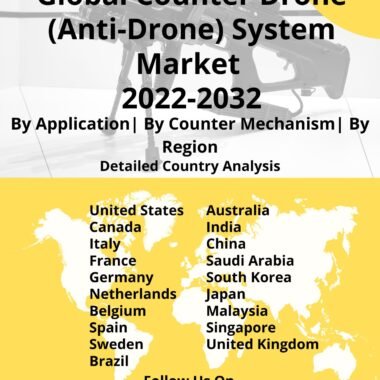Description
155mm Artillery Shell Market
Frequently Asked Questions of 155mm Artillery Shell Market
155mm artillery shells are a type of ammunition used in large-caliber artillery guns. They are typically made of steel and filled with high explosives, although they can also be used to deliver other types of payloads, such as chemical weapons or smoke canisters. 155mm shells are typically made of 4 parts primer, propellant, fuse, and projectile. It weighs around 100 pounds and is around 2 feet tall, as the name suggests it has a diameter of 155mm. The range of 155mm artillery ammunition depends on several factors, including the type of shell, the type of gun, and the propellant used. The maximum range of a 155mm shell is typically around 20 Miles, but it can be extended with the use of special propellants.
155mm shells are used by militaries around the world due to their versatility and cost. There are several different types of 155mm shells, each with its specific purpose. High-explosive (HE) shells are the most common type of 155mm shell. They are filled with high explosives and are used to destroy enemy targets. Incendiary shells are filled with a flammable substance, such as napalm, and are used to start fires. Smoke shells are filled with smoke-producing substances and are used to obscure the battlefield. Chemical shells are filled with a chemical agent, such as mustard gas, and are used to incapacitate or kill enemy forces. Guided shells are equipped with a guidance system that allows them to be accurately fired at targets that cannot be seen directly from the gun position.
155mm artillery ammunition is still an important weapon in the modern battlefield. However, several new technologies are being developed that could make 155mm shells even more effective in the future. One of the most promising technologies is the use of guided shells. Guided shells are equipped with a guidance system that allows them to be accurately fired at targets that cannot be seen directly from the gun position. This makes them ideal for use in indirect fire support missions. Another promising technology is the use of programmable munitions. Programmable munitions are shells that can be programmed to detonate at a specific time or location. This makes them ideal for use in area denial missions.
155mm artillery ammunition is used in a variety of military applications. Direct fire support is the use of artillery to directly engage enemy forces. 155mm artillery ammunition shells can be used to hit targets with a high degree of accuracy, making them effective for suppressing enemy fire or destroying enemy positions. Indirect fire support: is the use of artillery to fire at targets that cannot be seen directly from the gun position. 155mm shells can be used for indirect fire support because they have a long range and can be fired with a high degree of accuracy. The 155mm shell is one of the widely used munitions in the Russia- Ukraine conflict, The US has shipped more than 1.5 Million units of 155mm to Ukraine since the conflict began. This count does not include the precision-guided and Remote Anti- Armor Mine rounds.
Major Factors Driving 155mm Artillery Shell Market Growth
Several factors are driving the growth of the market. One factor is the increasing demand for artillery shells from emerging markets. These markets are investing in their militaries and are looking to upgrade their artillery systems. Another factor driving the market is the development of new technologies for artillery ammunition. These technologies include range-extending technologies, such as base bleed and rocket-assisted propulsion, and precision-guided technologies, such as GPS-guided shells
Trends Influencing the 155mm Artillery Shell Market Size
Base bleed is a technology that uses a series of small holes in the base of the shell to create a cloud of gas that trails behind the shell. This gas acts as a brake, slowing the shell down and allowing it to travel further. Rocket-assisted propulsion uses a small rocket motor to boost the shell’s initial velocity. This allows the shell to travel further and hit its target with greater accuracy. These advancements in artillery ammunition technology have made artillery a more effective and versatile weapon. They have also made artillery more precise and accurate, which has reduced the risk of collateral damage.
155mm Artillery Shell Market Forecast & Dynamics
As technology continues to develop, we can expect to see even more innovative and powerful artillery ammunition in the future. The geopolitical climate in Europe and the Asia-Pacific region will also influence procurement decisions. A thorough market analysis and market size are included in the market forecast. The market study covers market size, trends, obstacles, and opportunities by region. Market size by country is also included in the regional study. The high-explosive segment is the largest segment of the market, accounting for the majority of the market share. This is because high-explosive shells are the most common type of artillery ammunition used in combat. The extended range segment is the fastest-growing segment of the market, due to the increasing demand for shells with longer ranges.
155mm Artillery Ammunition Market Analysis for Recent Developments
The need to replace ammunition stocks as a result of the fighting in Ukraine has resulted in substantial artillery ammunition contracts for Rheinmetall. The German Bundeswehr has just placed a significant order for service and practice artillery ammunition worth around €1.3 billion. The Federal Office for Bundeswehr Equipment, Information Technology, and In-Service Support (BAAINBw) in Koblenz has now signed two contracts to that effect. A new framework contract for the delivery of 155mm artillery ammunition has been given to Rheinmetall, while an existing framework contract has been increased. In total, several hundred thousand shells of various types, including fuses and propelling charges, are included in the scope of delivery. The new framework contract, which is set to last until 2029, has a potential order volume of roughly €1.2 billion. The Bundeswehr has also increased an existing framework deal for DM121 ammunition. In addition to the aforementioned framework contract, this implies an order volume of around €137 million.
The global landscape of 155mm artillery shells has witnessed notable advancements, reflecting innovations in precision, range, and versatility. These artillery shells, widely used in various artillery systems, play a critical role in modern military operations. Advancements in guidance systems, including GPS and inertial navigation, have significantly improved the accuracy of 155mm artillery shells. This precision allows for targeted strikes against a variety of enemy assets, including fortified positions and mobile targets, minimizing collateral damage.
The integration of advanced fuzzing mechanisms and proximity sensors enhances the effectiveness of these artillery shells against different types of targets. Smart munitions with selectable modes provide adaptability to changing battlefield scenarios, ensuring optimal performance in diverse environments. Increased modularity and compatibility with multiple artillery systems contribute to the flexibility of 155mm artillery shells, allowing for seamless integration with various platforms and artillery pieces. Interoperability among different nations’ artillery systems is also a focus, facilitating joint military operations and coalition efforts. Efforts to enhance the sustainability of artillery systems include developments in propellant technologies, reducing environmental impact, and optimizing logistical efficiency. Overall, the advancements in global 155mm artillery shells in 2023 underscore a commitment to precision, adaptability, and interoperability in modern artillery capabilities.
Key Companies





